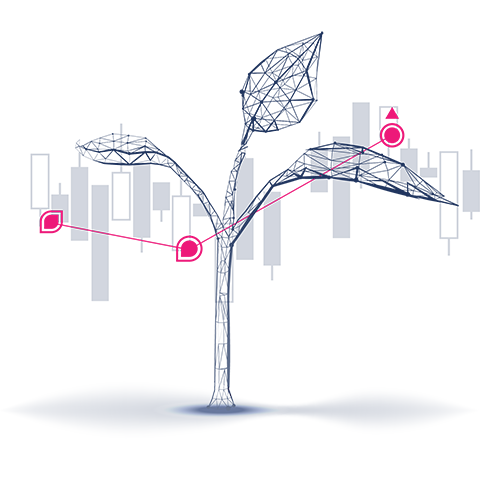
3 aspirations to achieve transformational sales growth
Sales performance management continues to gain traction across organizations of all shapes and sizes all over the world. As they become larger, more complex, more diverse, and increasingly global, sales organizations must aspire to scalability, predictability, and transparency to achieve transformational sales growth amid strengthening economic headwinds.1
Sales performance management provides a consistent, global, and automated structure with a common view of data on a shared platform – creating a foundation for greater confidence and trust in an organization’s sales forecasting and decision-making. According to Gartner, Sales Performance Management is “a suite of operational and analytical functions that automate and unite back-office sales operations and are implemented to improve operational efficiency and effectiveness.”2 Sales performance management is extolled as a way for organizations to produce more insightful, accurate sales analyses and predictions, enabling them to become more proactive decision-makers.1 A 2022 market study by Dresner Advisory Services found that sales performance management is viewed as a “core competitive enterprise component of high relevance, especially in very large organizations.” Eighty-five percent of respondents said that sales performance management is, at minimum, “important” – including 66% who said it was either “critical” or “very important,” a figure that is 10 percentage points higher than that recorded in 2021. Only 14% said sales performance management was “somewhat important” or “not important.”3
Scalability is “smart growth” as sales leaders place grounded, astute bets in areas – whether new territories, markets, or goods – where they believe they can quickly advance, expand, and flourish. Predictability is the ability of organizations to consistently execute on that smart growth through insightful, repeatable, informed decisions. Transparency is about providing the visibility that engenders confidence stakeholders need to understand the “why” and “how” a decision was reached.
Explore why sales teams should focus on scalability, predictability, and transparency for successful transformational growth.
1. Scalability creates opportunities for sales leaders
An organization that is scalable is one that can maintain or improve its profit margins, retain a consistent view of performance, and plan appropriately for demand and opportunity through increases in sales volume, headcount, and market expansion. The ability to scale is critically dependent on having systems in place that are established yet adaptable – and can withstand the pressure of rapidly increasing workloads while remaining efficient, resilient, and profitable.
To achieve scalability, an organization’s operational planning and budgeting – including costs, revenues, sales figures, and other measurable values – must be aligned to its overarching strategy. Sales performance management can help sales leaders identify which areas to grow or expand, understand potential returns on investment, estimate expected costs, expose resource shortages, and guide their investments or reallocations. Through modeling simulations using different variables – also known as “what if” scenarios – teams can quickly envision that, for example, investing in a market or a particular region could generate a level of sales and revenue that, in turn, could spur the hiring of more sales professionals. In short, sales performance management can point sales leaders to areas in which they have a consistent and compelling right to win.
A scenario planning exercise can also expose risks to the sales plan. For example, it can expose the downstream impact of inadequate communication and collaboration with human resources, legal, finance, and other relevant departments. In addition, modeling through sales performance management can alert sales leaders to risk stemming from territory or personnel underperformance, empowering them to pivot activities and investments before the plan is jeopardized.
2. Predictability enables rich insights for sales teams
Planning for growth requires organizations to have a degree of predictability that is critical to have yet difficult to achieve. Stakeholders and shareholders must have a high degree of confidence in an organization’s ability to produce predictable results in today’s uncertain business environment. A predictable organization is one that’s able to leverage rich insights into allocating resources, consistently managing risks, and regularly achieving plan goals. This process must be repeatable, consistent, and performed on an ongoing basis quarter over quarter, year after year. For sales leaders, gaining richer insight into their business over time with tools such as sales forecasting empowers them to act with decisiveness and confidence. Predictability is enabled by sales performance management. With sales performance management, a sales team can import data into one framework and source of truth, enabling a sales operations leader, COO, or CFO to assess the information, drill down into details, and appropriately change course.
Additionally, sales performance management can offer an artificial intelligence (AI) capability in which the platform can provide a potentially unbiased assessment that can be compared with a human assessment. AI is not necessarily a flawless analysis or perfect answer; however, it does provide sales leaders with an alternate perspective, one that may diverge from the human viewpoint. This scenario presents stakeholders with an opportunity to dig deeper and develop a basis of comparison against which they can determine whether a business model needs to be refined or why sales teams are viewing information through a particular “lens.”
Through repeatable and consistent processes, sales teams in a predictable organization can make consistent, informed decisions and adjust activities as needed to align with the business strategy and revenue goals.
3. Transparency builds trust across the sales organization
Underpinning scalability and predictability throughout the sales performance management process is transparency. A transparent sales organization can build confidence and trust by providing accurate, predictable, and consistent information to its teams, topline management, and other stakeholders such as the finance department. Sales leaders must convey what’s happening in the business, if sales forecasting is accurate, if they’re getting proper and accurate insights, or what course corrections should be made.
For example, imagine a software organization is planning to increase sales of its cloud-based product. As a result, its platform team needs sufficient capacity at its data centers to accommodate the planned increase of customers for the quarter and, therefore, needs more resources to onboard those customers. The human resources department may need to expand and accelerate hiring. A decision made in sales can create such downstream effects to which other parts of the organization will need to react.
Transparency is also vital for individual sales professionals. Visibility into their targets, incentives, sales data, and parity in their territories and quotas provides an opportunity to reduce and correct any errors in compensation. This visibility engenders greater confidence within the system and organization, and helps them to plan effectively, define their sales territories, target specific industries, and disclose the potential opportunities they’re aiming for. In addition, they can provide feedback regarding what’s working and what isn’t, and whether successes can be replicated elsewhere.
Conclusion
To grow and scale a business in this environment, the sales organization must be adaptable: to the needs of their customers, to the dynamics of the market, to the competitive landscape, to the growing presence of automation, and to the power of data-driven decisiveness. Sales leaders who aren’t continually measuring and evaluating their performance, operations, teams, and customers may not be able to spot the trends, opportunities, and risks that could make or break their year. Having visibility isn’t a novel concept; however, the recognition that there is always more to see and understand is what differentiates a sales organization that is high performing from one that is merely functional.
1 Jedox, Your ultimate guide for strategic sales planning, 2022
2 Gartner, Market Guide for SPM, Melissa Hilbert and Steve Herz, 21 March 2022











